
Climbing a mountain soon? You need to read this.



Life’s grandest journeys are often found on the Himalayas – and the grandest of them all, arguably, is embedded in a 16-day trek to the Everest Base Camp.
Known as EBC for short, this more-than-two-week journey is a rugged expedition that brings you to the foothills of the tallest mountain of our world, and it gifts you with a consolatory summit of 5,364 m (17,598 ft) at the peak of your adventure. At this point, you are but 3,484m away from the top, and it’s almost like you more than half-made it even without trying. It’s tough work, but still the perfect low-commitment option for intrepid travellers and seasoned climbers looking for an easier Himalayan fix because: while it doesn’t take you all the way- it takes you some of the way; and even in this bizarre neither-here-nor-there ascent, there still exists an excellent canvas to build grit and spirit; still a raw wealth of adventure and soul-stirring moments waiting to be found. And still, definitely, a badge for the books.
It’s a profound odyssey of the spirit, a scale into the realms of human resilience and natural grandeur – and yet, since 2013, there has never been a time I have heard the words Everest Base Camp, and not have my thoughts immediately travel – not to the majesty and sheer reverance of Nature’s loftiest mountain, but- to AMS, the spectre that haunts every 1 out of 2 climbers (???) who attempt this very trek.

It is part of a storied tradition that is inextricably weaved into the journey of any mountain trekker: the treacherous betrayal of Acute Mountain Sickness (or, AMS, for short).
AMS is a condition that occurs when the body fails to acclimatize to the reduced oxygen levels at higher elevations; and it can start to set in from as mid-level as 2,500m (8,000 ft). Mild symptoms include headaches, nausea, fatigue, dizziness, and difficulty sleeping – and in severe conditions, you stop walking, start hallucinating, and eventually you lose consciousness and slip into a coma that just might prove fatal.
Severe AMS is almost always life-threatening – death is definite without descent; and yet, sometimes, it can still be impossible to notice until it is too late to notice. It’s like an insidious shadow that cloaks the journey, lurking in the rarified air of the mountains and confusing you into mistaking your weakened state as something of a test of resilience and courage. In fact, the number one reason why AMS continues to attribute so sizeably to the cause of deaths on the Himalayas (despite being so immediately salvageable in its infancy stages) is because, no one ever wants to see their own signs. A headache is a headache is a headache… until it suddenly morphs into a sinister sentinel that reigns full control over the threshold of your own life and death.


And then what do you do?
IT WOULD NEVER HAPPEN TO ME… UNTIL IT HAPPENED TO ME.
My journey with AMS was the culmination of high altitude, physical exertion, and- what I suspect to have had been the grandest culprit of all- a swift and adverse turn in the day’s weather.
Everybody knows to dress in layers when you’re here, it’s EBC 101. You have a windbreaker and you have a downjacket and maybe you even have a sweater; and throughout the course of the entire day, you dispense with them accordingly. This is because, every day by every hour at every mile, the temperatures ebb and flow more precariously than the mood swings of a teenager. You might start the day really cold but one hour in, the Earth warms up and you start to perspire – and then just as you decide to layer down to your windbreaker, it starts to get cold all over again.
It’s all part and parcel of the grand Nepal trekking experience; but Nepal was, as I quickly learned, also just as characteristic in its weather tantrums. Under the influence of an impending cyclone that hit Delhi just a day before we were due to summit, the landscape totally transformed over the short span of a mid-morning: In just under two hours, we escalated from a crisp, cool, sunny morning into a swirling vortex of fierce winds and dense fog and heavy snow that hurled down on us like a rainstorm.
This was not a region that snowed in the month of May.
And also, I didn’t realize it then, but looking back at it now, this was very possibly when the early onset of my AMS began.
AMS SYMPTOMS EVERY CLIMBER NEEDS TO KNOW
MILD SYMPTOMS
☆ Headache
☆ Fatigue / Weakness
☆ Dizziness / Lightheadedness
☆ Loss of Appetite
☆ Nausea / Vomiting
☆ Shortness of breath with exertion
☆ Rapid heartbeat
☆ Difficulty concentrating or confusion
☆ Difficulty sleeping
☆ Swelling of hands, feet, or face
HEAVY SYMPTOMS
☆ Severe Headache that does not respond to pain medication
☆ Confusion or altered mental status
☆ Difficulty walking / lack of coordination
☆ Hallucinations
☆ Chest tightness or congestion
☆ Difficulty breathing, even at rest
☆ Bluish discoloration of the lips or fingertips
☆ Coughing up froth
☆ Loss of consciousness
☆ Coma
While doing my own deep dive into the world of AMS, I came across countless stories of people who ignored their symptoms until they died – which should come as a surprise but really isn’t, if you think about the kind of people who’d undertake an expedition like this in the first place. They’re resilient, indomitable, and driven by an insatiable curiosity to push the limits of human endurance; which means that, more often than not, it takes a lot more than a migraine to stop them dead in their tracks and go, uh oh.
In these stories (told by witnesses of their deaths), many recount how they’d plan- not to descend, but- to stay at the current altitude just a little longer until they recover themselves; how they’d eventually start hallucinating things that weren’t there; how they lose their ability to walk a straight line; and how they just don’t notice themselves slipping away, even as they are slipping away.
It’s hard to talk a mountaineer down from a mountain, I suppose; and sometimes, I wonder if that actually kills more pervasively than the condition itself.


Personally, all my symptoms were mild: it started with a mellow headache that coincided with the fall of snow, and when we finally reached our lodge some two hours later after staggering through an onslaught of howling winds and snow, the headache fully manifested itself; and the general weakness and lightheaded spinning and nausea and loss of appetite, in a neat little line, all too soon followed.
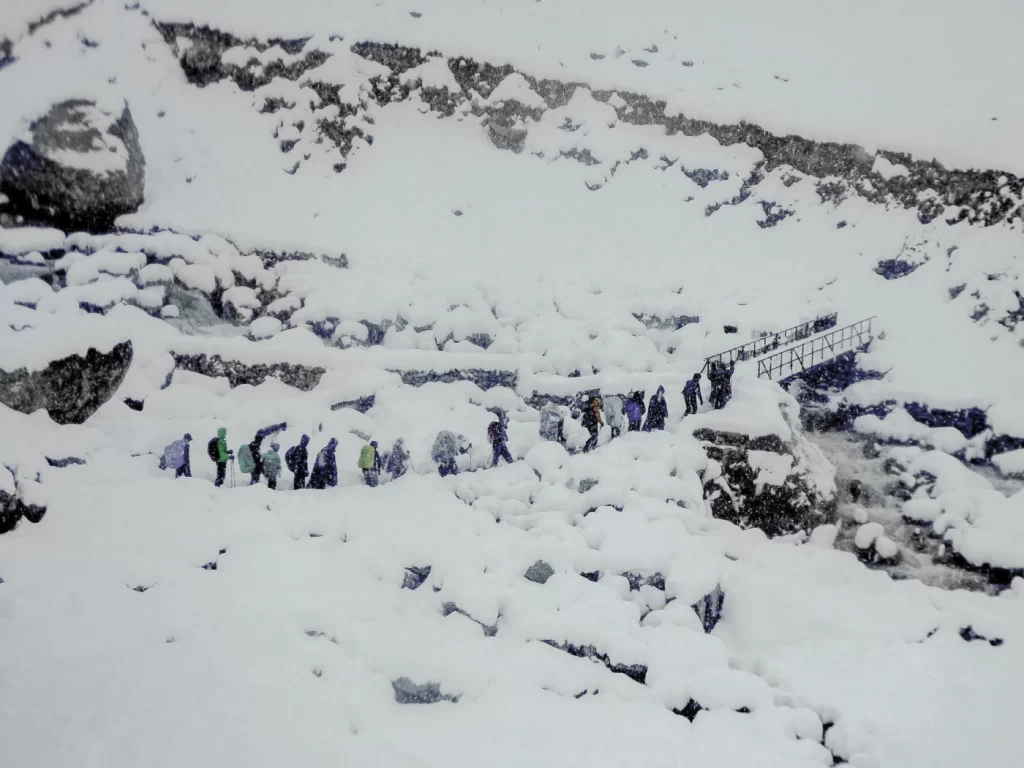
Once you have had AMS, you start to understand why some trekkers fail to see it coming. It is actually really hard to draw the distinction between being ‘unwell’ and being ‘AMS unwell’, while it is unfolding itself upon you. Your symptoms, even as they start to set in one after another, are not clear to you; and all you really feel is, disoriented. The pinnacle of my moment came when, upon settling into our rooms and refusing lunch from a fellow trekker who had noticed me slipping, I excused myself to the washroom, became so dizzy I had to spread my arms out and press both palms to opposite ends of the walls just to steady myself, stumbled out of the stall some two minutes later… and then promptly fainted, on the cold hard wooden cabin floors.
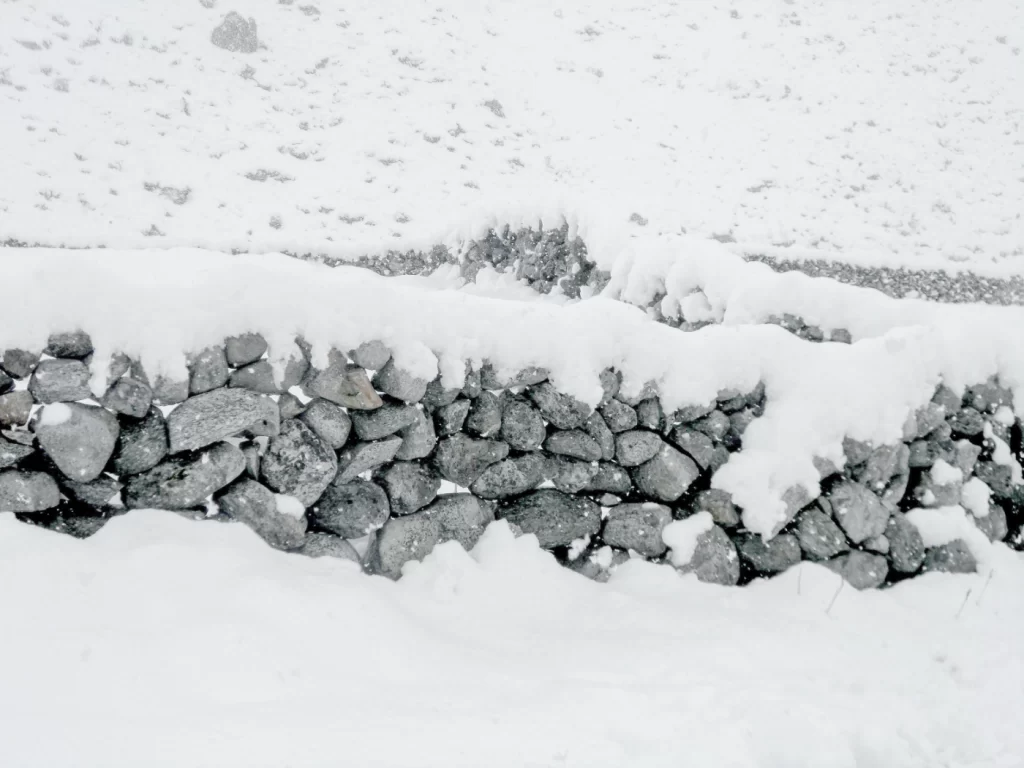
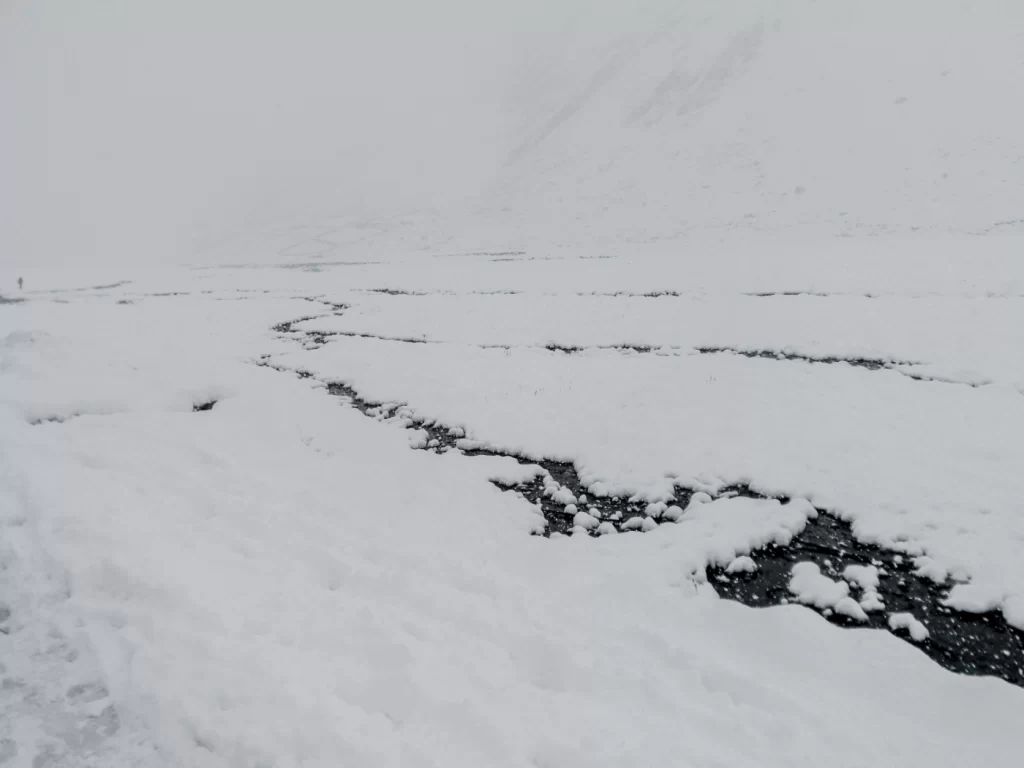
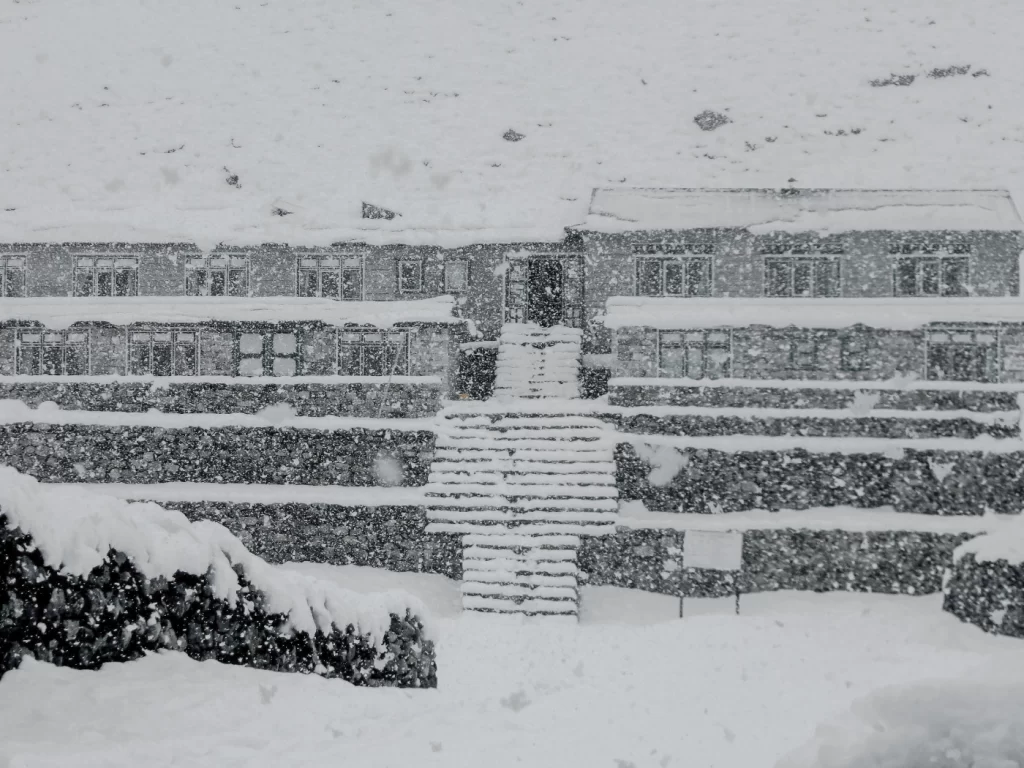
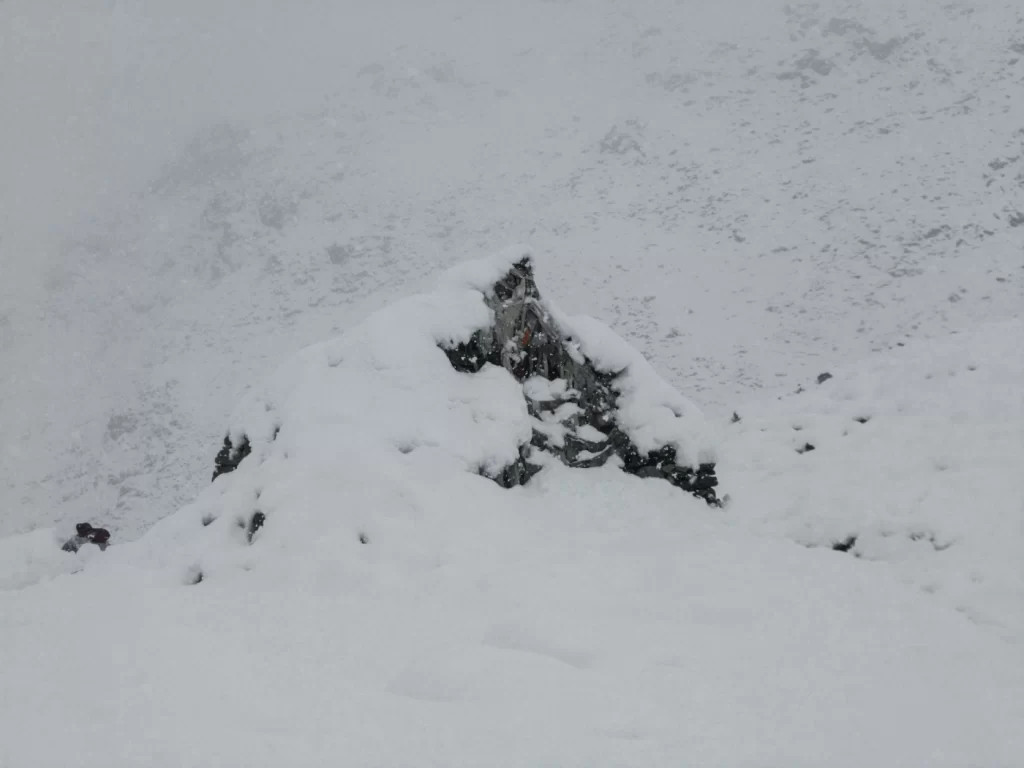
When I came to, I found myself back in my own bed surrounded by a bunch of people, with a mug of hot chocolate waiting on the side. My room mate thought I ate something nasty (I didn’t); my guide thought I’d been hiding my AMS symptoms all this time (I WASN’T.); and strangely, even as the general advice is to descend as soon as AMS kicks in, I miraculously got better at the same altitude by the next day.
YOU ARE MORE PRONE TO AMS IF YOU:
☆ Are not used to high altitudes.
☆ Ascend too quickly.
☆ Have alcohol in your system (for this reason, PLEASE stay off alcohol at the guest lodges!).
☆ Having existing medical conditions, particularly heart/lung.
☆ Generally not in good physical form.
WHAT TO DO WHEN AMS HITS
☆ If you’re in a group, tell your leader AT ONCE.
☆ If you’re not already on Diamox, start immediately.
☆ DO NOT ascend further.
☆ Prioritize rest & recovery; do not stress over decisions at this point.
☆ If your condition does not improve or continues to deteriorate, DESCEND IMMEDIATELY.
PREPARE YOURSELF AGAINST AMS
☆ Stay hydrated ALWAYS.
☆ Ensure enough rest.
☆ Maintain a trek-appropriate diet (plenty of carbs & protein!).
☆ Get a Diamox prescription before leaving home and start it from Day 1, symptoms or not.
☆ Ensure your itinerary factors in enough acclimatization.
There is much to be said about setting forth with nothing but an adventurous mind; but there is also a valuable lesson in listening to that voice that tells you, every once in a while, Stop.
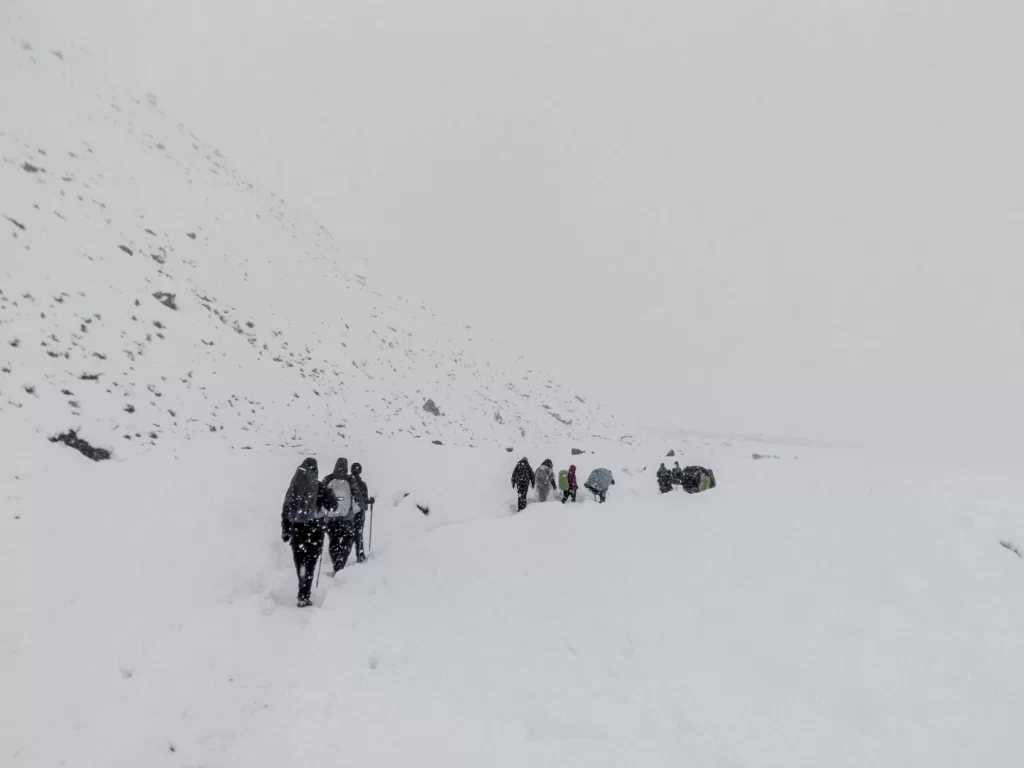
Happy trails and stay safe, always.

Comments
-
-
Amabel Buck
Sounds like a really scary experience! Amazing how it creeps up on you, I definitely felt it in Cusco before hiking to Machu Picchu. Thankfully we factored in a few days to acclimatise. Great tips for protecting yourself against it, prevention is definitely the best cure!
-
Tigrest
Wow, this sounds quite extreme! I can relate to this after doing the Annapurna trek. Lack of oxygen is a serious thing and can end up badly. Glad you ended up being ok! Happy trekking in the future!
-
Jan
AMS is truly scary! But I presume if you acclimatise long enough in a lower altitude, it could be better. We went up in Sikkim recently to 15000+ feet. We are seniors. We carried portable oxygen cylinders but thankfully didnt need them. Of course, we were up only for about 15 minutes or so and started our drive back. I am glad you made it safe. Thanks for the acclimatising and other tips. 🙂

Valeriya Goffe
Very useful information for those who are planning a journey up the Everest or other tall mountains. This seems to be a very serious condition climbers should be aware of.